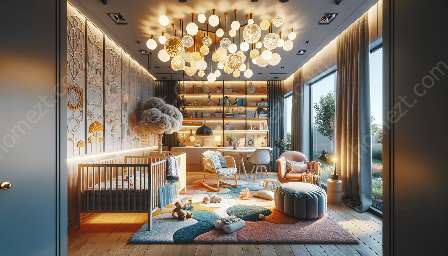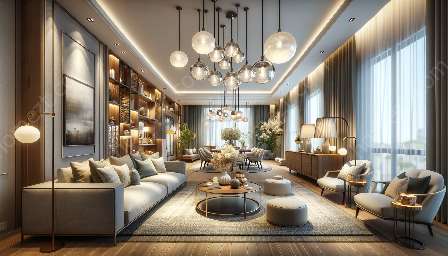Energy-efficient lighting is essential for creating a safe and inviting environment in nurseries and playrooms. Not only does it contribute to significant cost savings, but it also ensures the well-being of children by offering the right level of illumination while minimizing environmental impact. In this topic cluster, we will explore the benefits of energy-efficient lighting, its relevance to nursery and playroom settings, and the best practices for implementing it effectively.
The Benefits of Energy-Efficient Lighting
Energy-efficient lighting, such as LED and CFL bulbs, offers numerous advantages for nurseries and playrooms. These bulbs consume significantly less energy than traditional incandescent bulbs, leading to substantial cost savings for families and businesses. Additionally, they produce less heat, reducing the risk of burns or fire hazards in these sensitive environments. The long lifespan of energy-efficient bulbs means less frequent replacements, resulting in reduced maintenance and operational costs.
Creating a Safe and Comfortable Space
When it comes to lighting in nursery and playroom environments, safety and comfort are top priorities. Energy-efficient lighting provides consistent, flicker-free illumination, which is especially important for children with sensory sensitivities. The soft, natural glow of LED lights contributes to a calming ambiance, promoting relaxation and a sense of security for young ones. Furthermore, the reduced heat output of energy-efficient bulbs ensures that curious toddlers won't get burned if they come in contact with the fixtures.
Environmental Impact and Sustainability
By choosing energy-efficient lighting, families and businesses can actively reduce their carbon footprint and contribute to a more sustainable future. LED and CFL bulbs consume less electricity, lowering greenhouse gas emissions and conserving natural resources. This aligns with the values of many parents and caregivers who want to instill eco-consciousness in their children from an early age. Introducing sustainable practices in the nursery and playroom can serve as an educational opportunity for kids, teaching them the importance of energy conservation and environmental stewardship.
Best Practices for Implementing Energy-Efficient Lighting
When planning the lighting design for nurseries and playrooms, it's important to consider the specific needs of these spaces. Opt for LED lighting with a color temperature in the range of 2700K to 3000K, providing a warm and comfortable light that fosters a nurturing atmosphere. Use dimmable fixtures to accommodate various activities, such as reading, playing, and winding down for naptime. Additionally, incorporate motion sensor lights to enhance safety and energy savings, ensuring that lights are only activated when the space is in use.
Conclusion
Energy-efficient lighting is a fundamental element in creating safe, comfortable, and sustainable nurseries and playrooms. By prioritizing the adoption of energy-efficient bulbs and smart lighting strategies, families and businesses can enhance the well-being of children, reduce operational costs, and contribute to a greener planet. Through thoughtful planning and implementation, energy-efficient lighting can transform these spaces into vibrant, inviting environments for young ones to thrive.



